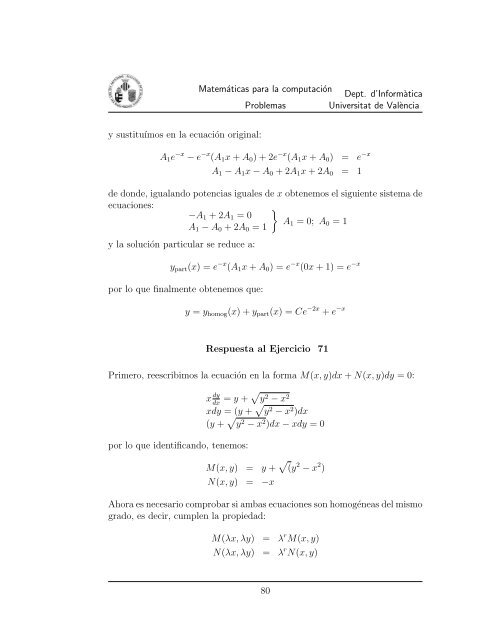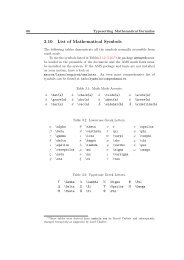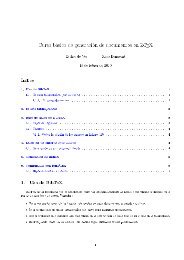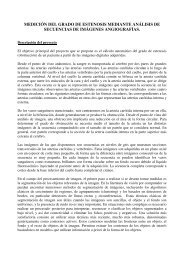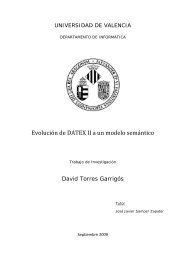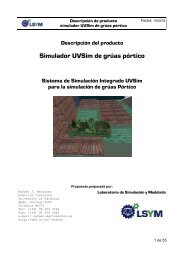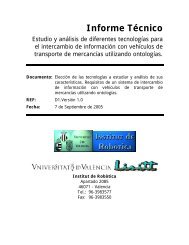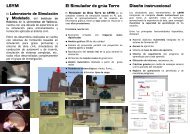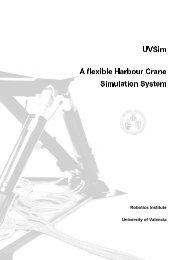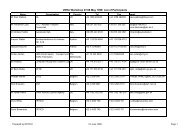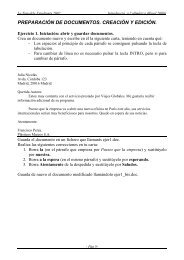Matemáticas para la Computación
Matemáticas para la Computación
Matemáticas para la Computación
Create successful ePaper yourself
Turn your PDF publications into a flip-book with our unique Google optimized e-Paper software.
<strong>Matemáticas</strong> <strong>para</strong> <strong>la</strong> computaciónDept. d’InformàticaProblemas Universitat de Valènciay sustituímos en <strong>la</strong> ecuación original:A 1 e −x − e −x (A 1 x + A 0 ) + 2e −x (A 1 x + A 0 ) = e −xA 1 − A 1 x − A 0 + 2A 1 x + 2A 0 = 1de donde, igua<strong>la</strong>ndo potencias iguales de x obtenemos el siguiente sistema deecuaciones:}−A 1 + 2A 1 = 0AA 1 − A 0 + 2A 0 = 1 1 = 0; A 0 = 1y <strong>la</strong> solución particu<strong>la</strong>r se reduce a:y part (x) = e −x (A 1 x + A 0 ) = e −x (0x + 1) = e −xpor lo que finalmente obtenemos que:y = y homog (x) + y part (x) = Ce −2x + e −xRespuesta al Ejercicio 71Primero, reescribimos <strong>la</strong> ecuación en <strong>la</strong> forma M(x, y)dx + N(x, y)dy = 0:por lo que identificando, tenemos:x dydx = y + √ y 2 − x 2xdy = (y + √ y 2 − x 2 )dx(y + √ y 2 − x 2 )dx − xdy = 0M(x, y) = y + √ (y 2 − x 2 )N(x, y) = −xAhora es necesario comprobar si ambas ecuaciones son homogéneas del mismogrado, es decir, cumplen <strong>la</strong> propiedad:M(λx, λy) = λ r M(x, y)N(λx, λy) = λ r N(x, y)80


